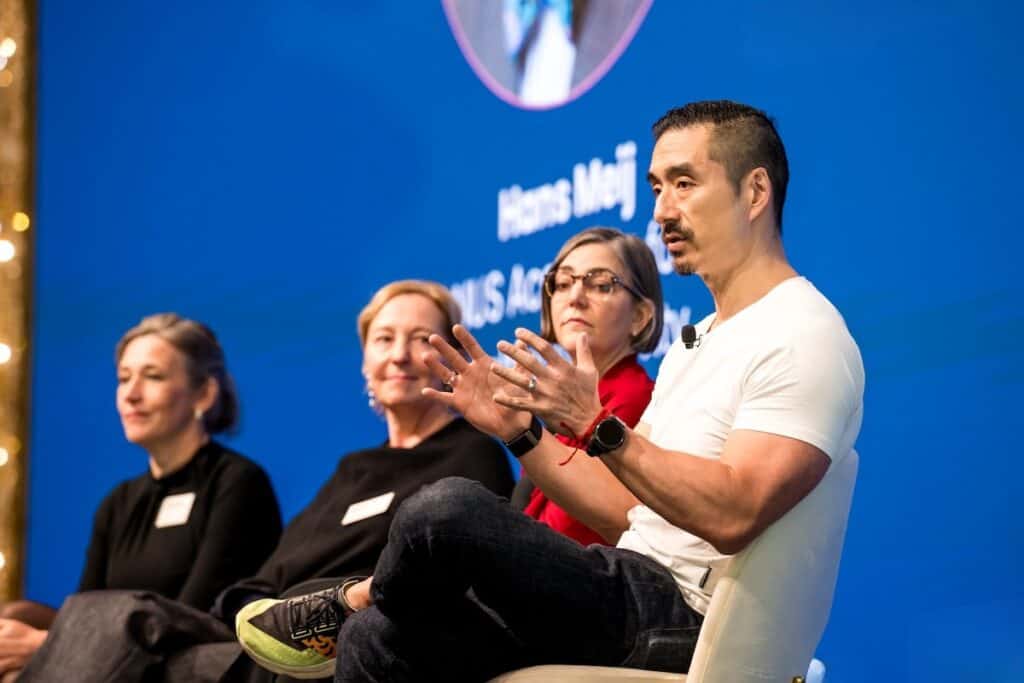Last updated on February 27, 2023
Darktrace Co-Founder and CEO, Poppy Gustafsson, reveals five cyber security trends shaping the future of the industry. Read more in our free CEO Forecast 2023.
For Poppy Gustafsson, Co-Founder and CEO of Darktrace, cyber security is about dealing with uncertainty. Whether it’s quantum or web3, cyber security companies need to constantly evolve as businesses benefit from embracing the latest tech.
When organisations first suffered cyber attacks, alarm bells rang and human security teams scrambled into action. The next wave of cyber security tech allowed firms to identify breaches, react quickly, and free up human resources.
Now, self-learning AI is helping organisations spot where they could be potentially vulnerable and predict future attacks.
The global cyber security market was valued at over $202b in 2022. So what’s next? Darktrace’s Poppy Gustafsson predicts five cyber security trends to watch in 2023:
1. We’re Moving from Reactive to Proactive Cyber Security
We’re now shifting to a proactive cyber security culture – and this needs to happen on a global scale. Cybercrime has no borders, so we need a tech Nato – an international cyber task force – to promote collaboration, share intelligence, and build a proactive, global cyber defence.
2. How Cyber Security Companies use AI is Changing
While advances in AI are changing how companies defend themselves against cyber attacks, cyber security is done best when AI and humans work hand in hand.
Darktrace, for example, developed its Cyber AI Analyst to act as an interface between the two, articulating the cause of a cyber threat and recommending a course of action in language that a non-cyber specialist can understand.
3. Hackers are Automating their Attacks
There were over 255 million phishing attacks in 2022 – a more than 60% increase on the previous year – with fraudulent messages from seemingly trustworthy sources tricking people into revealing sensitive information.
Voice-enabled phishing is already happening, with cybercriminals cloning the voices of CEOs to extract money from organisations, and deepfake videos will be next. For now, however, hackers are mostly using AI for automation; scanning databases, testing lists of stolen passwords, and sending out increasingly sophisticated, personalised phishing email campaigns.
4. Hacktivism is on the Rise
We’re seeing a new wave of cyber attacks that aren’t about making money, but designed to raise awareness of political or social issues, cause disruption, and change people’s perspectives.
Russia’s invasion of Ukraine saw hacktivism on a large scale as the Ukrainian government mobilised volunteers from the country’s hacker community to attack Russia’s military systems.
5. There’s a Growing Business Community on the Dark Web
After Colonial Pipeline suffered the largest cyberattack on oil infrastructure in US history, its attackers took a novel course of action; they apologised. Like any traditional company might react to a misstep, DarkSide issued a public statement of regret.
Many of the aspects of businesses that we’re used to – marketing, PR, even CSR – are reflected by groups operating on the dark web.
Hackers are offering ransomware as a service; cryptojacking, where hackers break into computers to mine cryptocurrency, is commonplace; and cybercriminals are hacking into organisations indiscriminately then selling access, creating an entire dark web business ecosystem.
Download our CEO Forecast 2023, where 10 founder-CEOs from 10 different industries predict the trends shaping the future of tech.
 All Posts
All Posts



